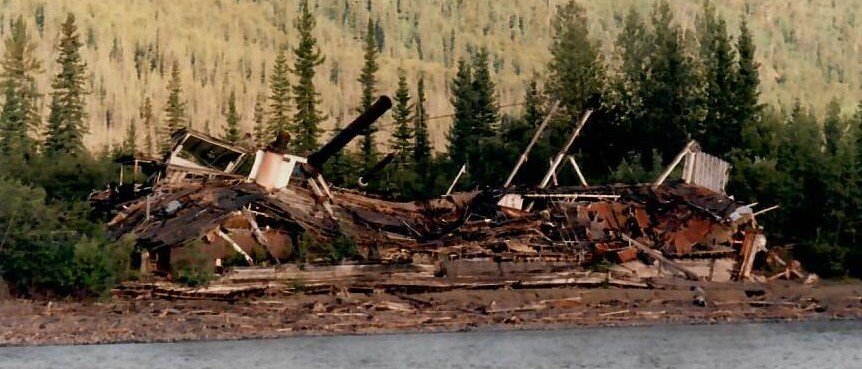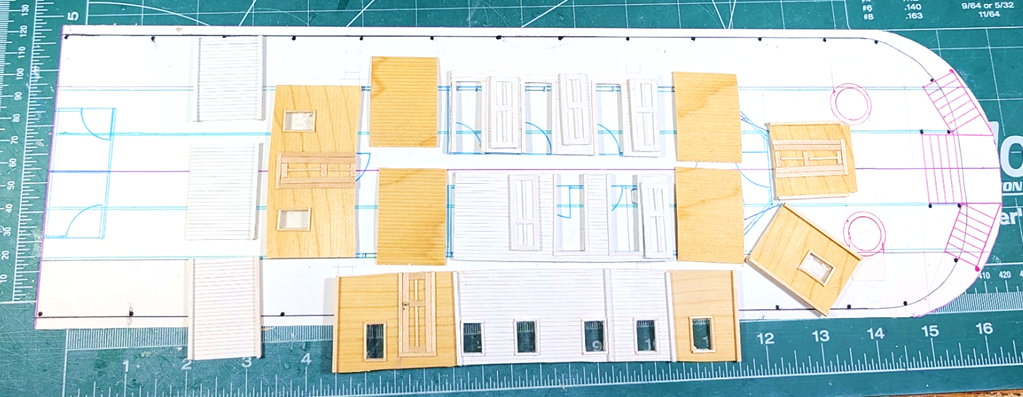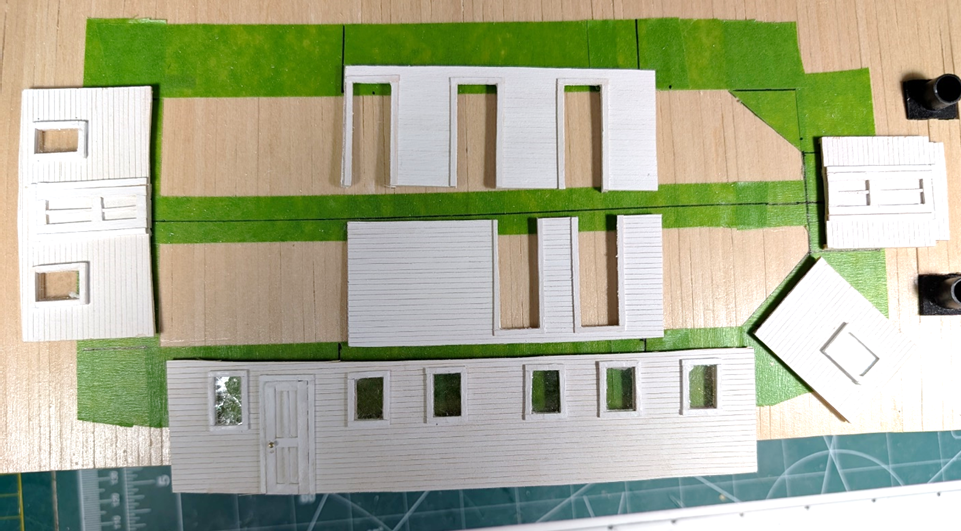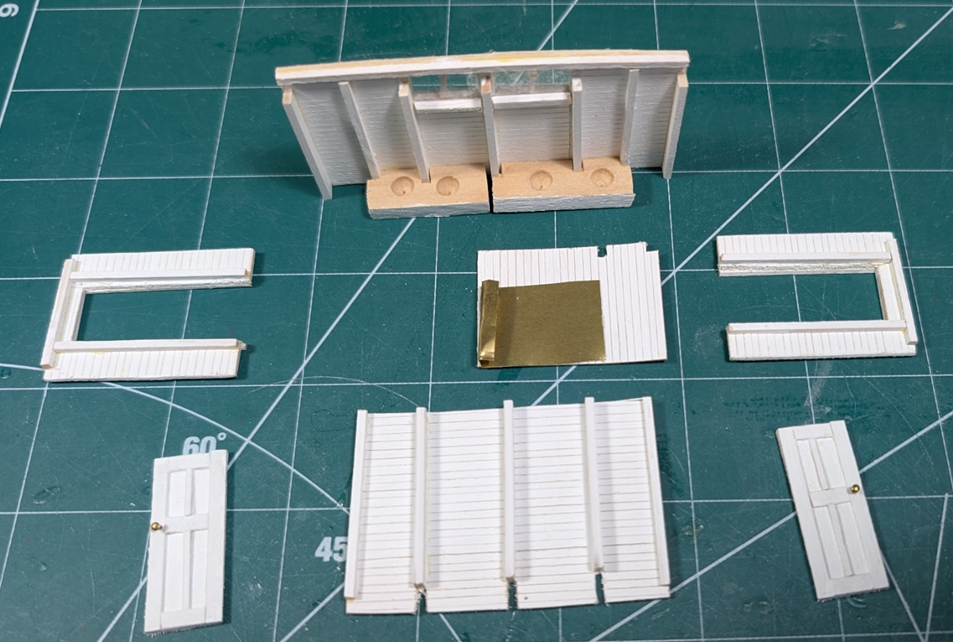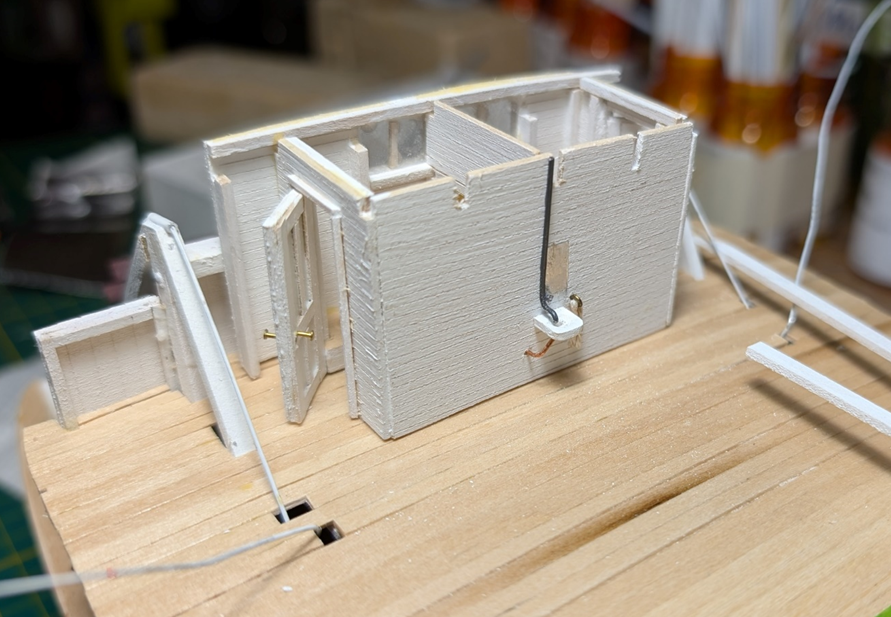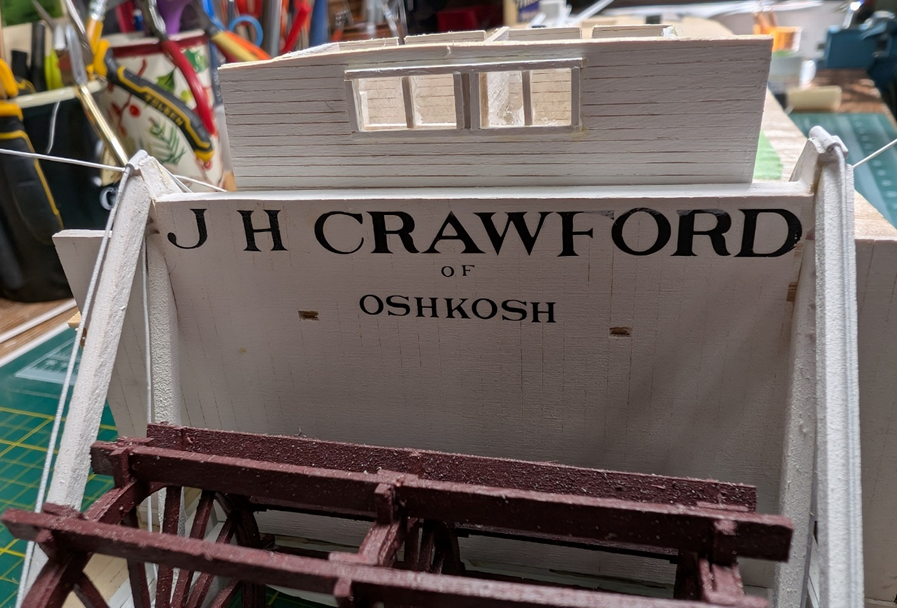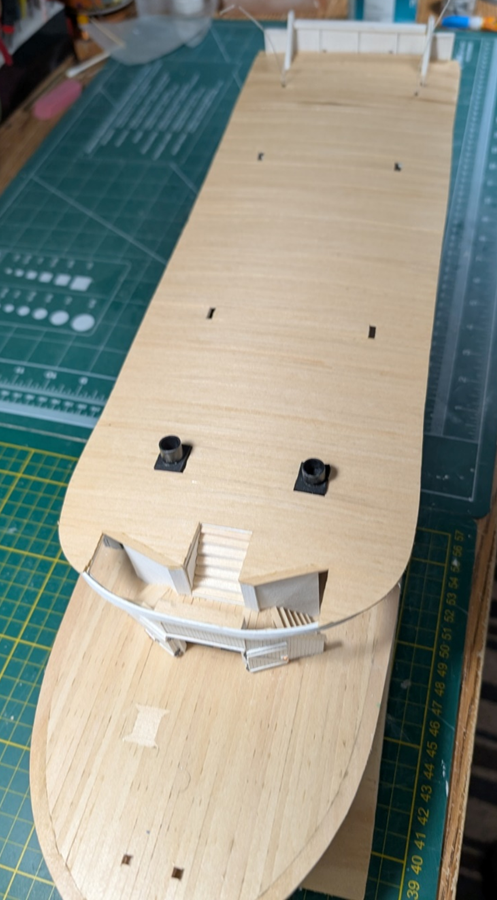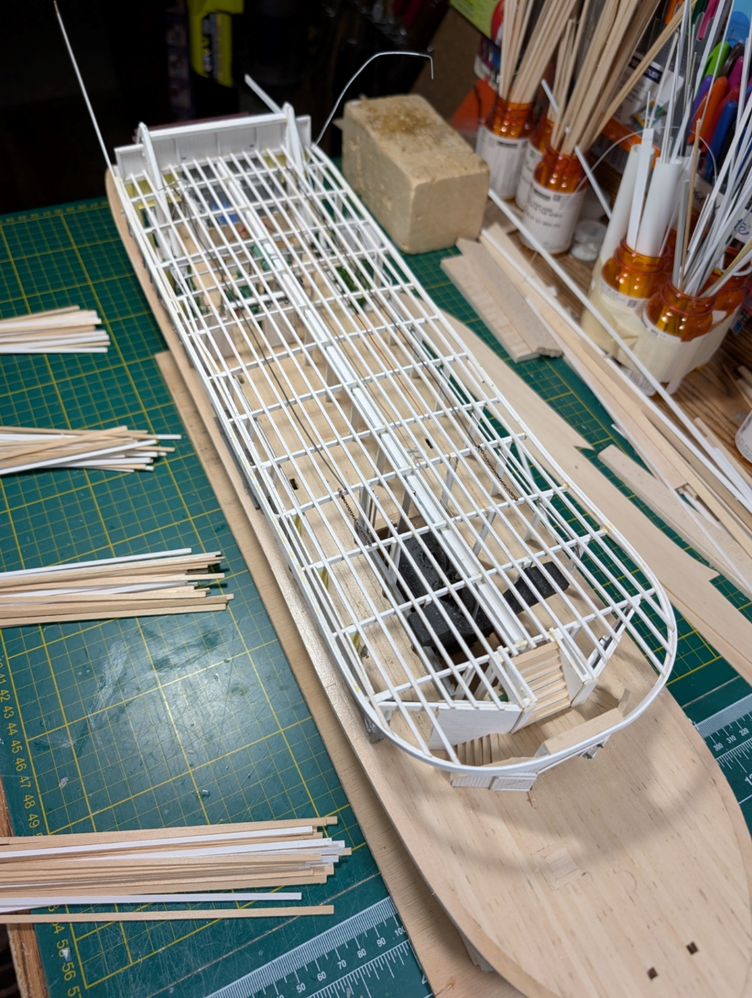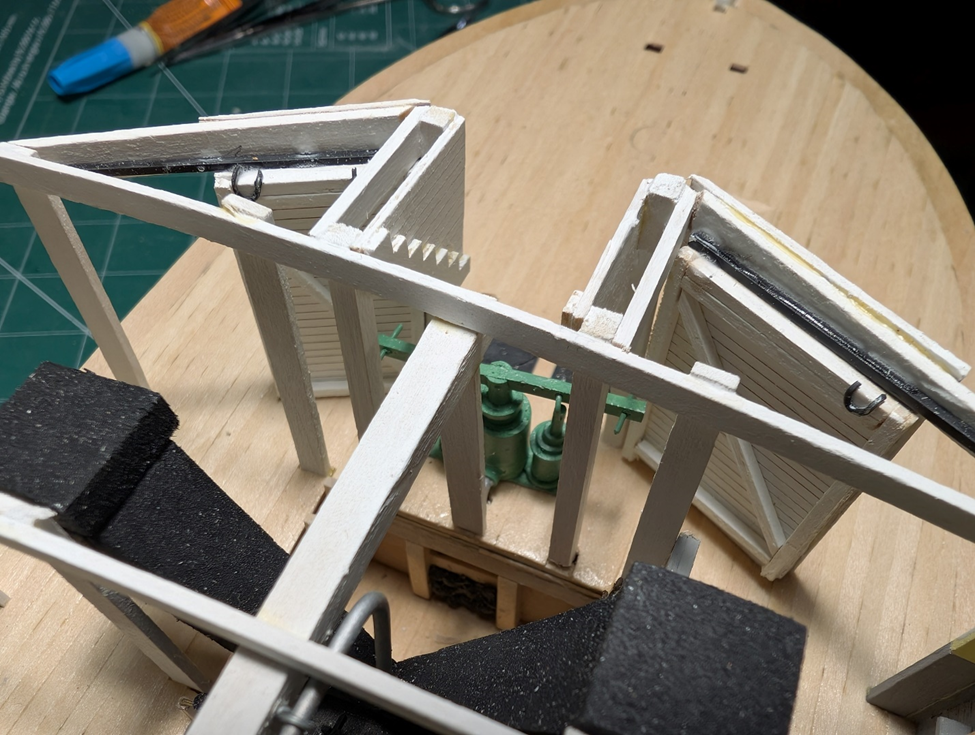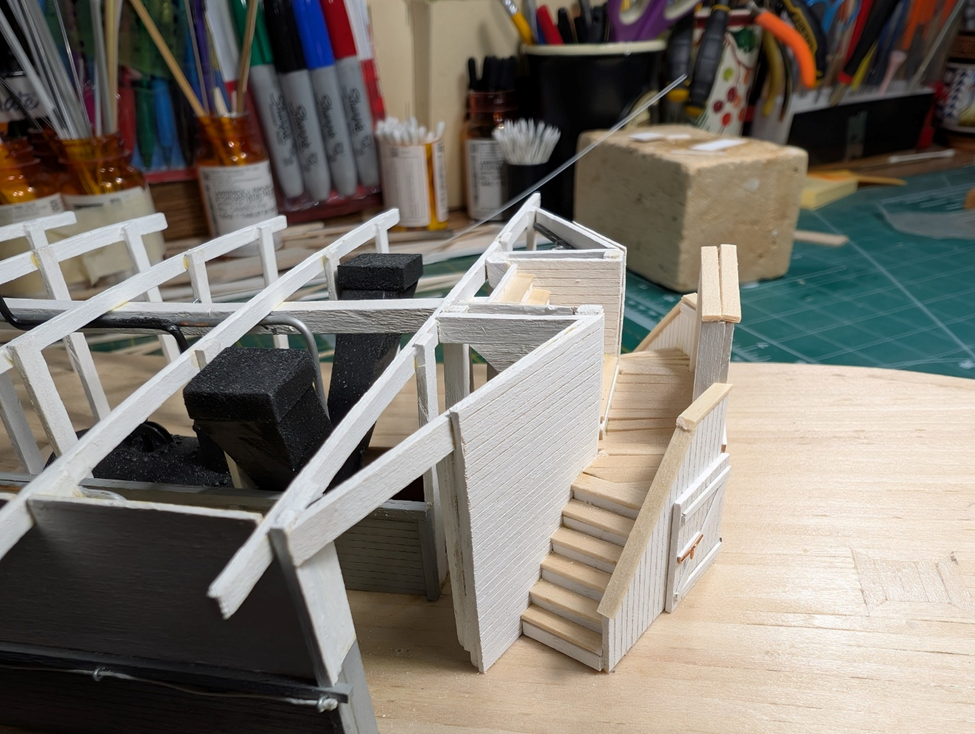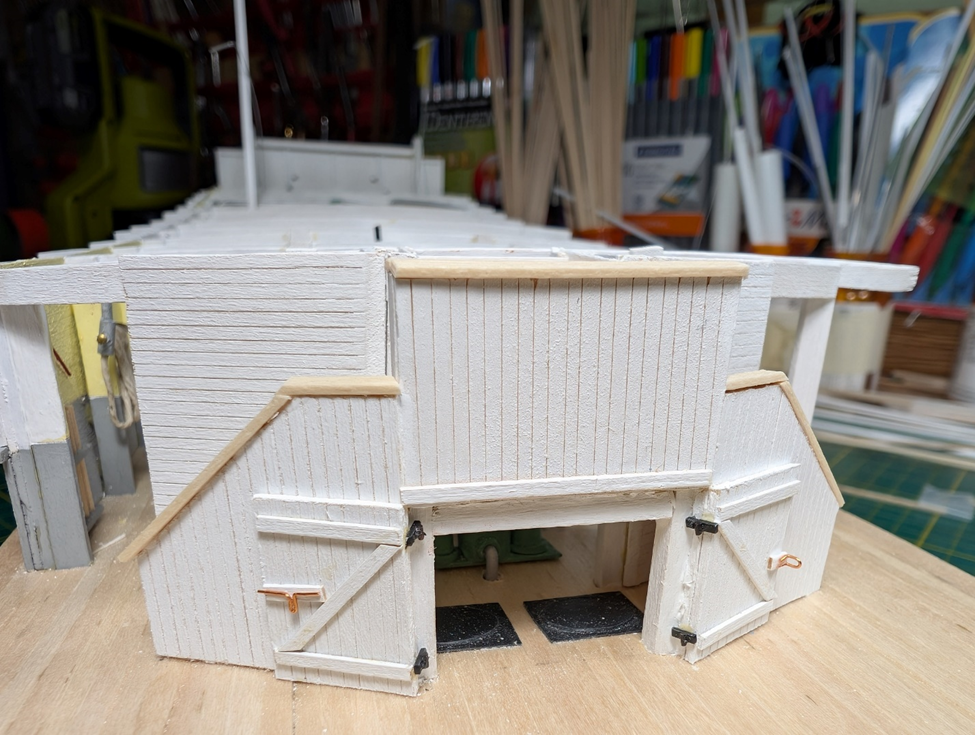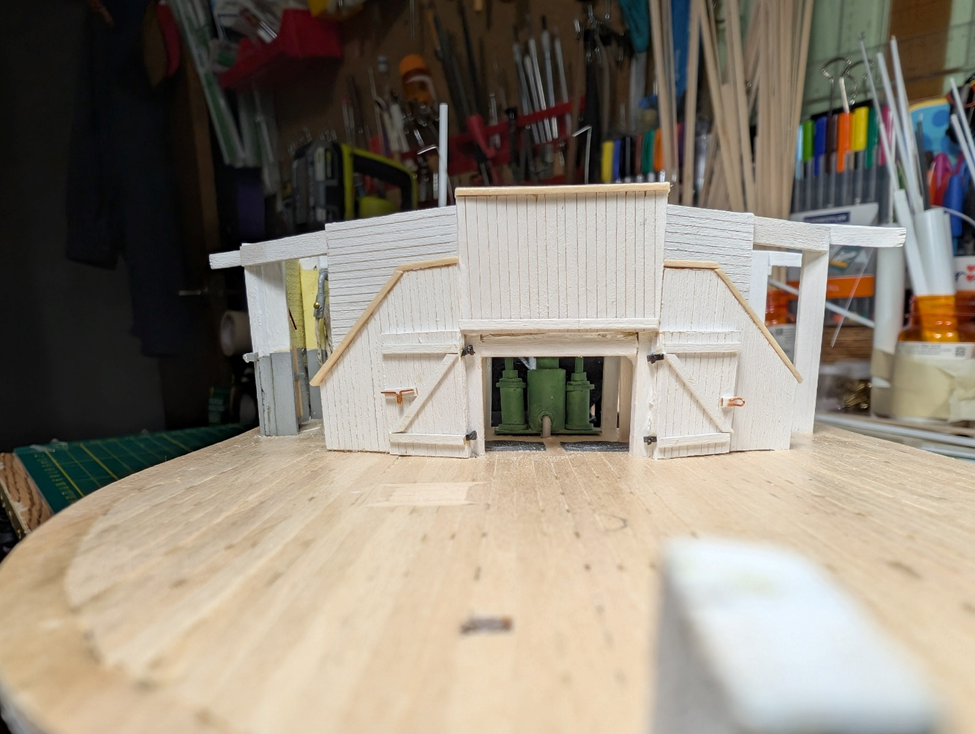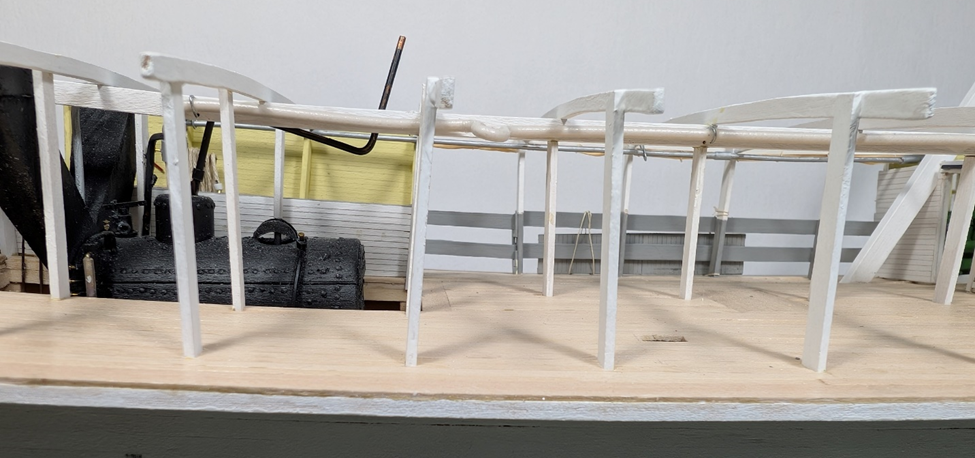-
Posts
149 -
Joined
-
Last visited
About LJP

Profile Information
-
Location
Southern Milwaukee, Wi Suburb
-
Interests
I am tired of kits of clipper ships - time to scratch build a sternwheeler of local interest.
Contact Methods
-
Yahoo
paplhamlb@sbcglobal.net
Recent Profile Visitors
-
 Cathead reacted to a post in a topic:
J H Crawford by LJP (Lawrence Paplham) - Scale 1:64 - an 1894 to 1898 Wisconsin sternwheeler
Cathead reacted to a post in a topic:
J H Crawford by LJP (Lawrence Paplham) - Scale 1:64 - an 1894 to 1898 Wisconsin sternwheeler
-
 Keith Black reacted to a post in a topic:
J H Crawford by LJP (Lawrence Paplham) - Scale 1:64 - an 1894 to 1898 Wisconsin sternwheeler
Keith Black reacted to a post in a topic:
J H Crawford by LJP (Lawrence Paplham) - Scale 1:64 - an 1894 to 1898 Wisconsin sternwheeler
-
 Cathead reacted to a post in a topic:
J H Crawford by LJP (Lawrence Paplham) - Scale 1:64 - an 1894 to 1898 Wisconsin sternwheeler
Cathead reacted to a post in a topic:
J H Crawford by LJP (Lawrence Paplham) - Scale 1:64 - an 1894 to 1898 Wisconsin sternwheeler
-
 Cathead reacted to a post in a topic:
J H Crawford by LJP (Lawrence Paplham) - Scale 1:64 - an 1894 to 1898 Wisconsin sternwheeler
Cathead reacted to a post in a topic:
J H Crawford by LJP (Lawrence Paplham) - Scale 1:64 - an 1894 to 1898 Wisconsin sternwheeler
-
 Keith Black reacted to a post in a topic:
J H Crawford by LJP (Lawrence Paplham) - Scale 1:64 - an 1894 to 1898 Wisconsin sternwheeler
Keith Black reacted to a post in a topic:
J H Crawford by LJP (Lawrence Paplham) - Scale 1:64 - an 1894 to 1898 Wisconsin sternwheeler
-
 Keith Black reacted to a post in a topic:
J H Crawford by LJP (Lawrence Paplham) - Scale 1:64 - an 1894 to 1898 Wisconsin sternwheeler
Keith Black reacted to a post in a topic:
J H Crawford by LJP (Lawrence Paplham) - Scale 1:64 - an 1894 to 1898 Wisconsin sternwheeler
-
 JacquesCousteau reacted to a post in a topic:
J H Crawford by LJP (Lawrence Paplham) - Scale 1:64 - an 1894 to 1898 Wisconsin sternwheeler
JacquesCousteau reacted to a post in a topic:
J H Crawford by LJP (Lawrence Paplham) - Scale 1:64 - an 1894 to 1898 Wisconsin sternwheeler
-
 wefalck reacted to a post in a topic:
J H Crawford by LJP (Lawrence Paplham) - Scale 1:64 - an 1894 to 1898 Wisconsin sternwheeler
wefalck reacted to a post in a topic:
J H Crawford by LJP (Lawrence Paplham) - Scale 1:64 - an 1894 to 1898 Wisconsin sternwheeler
-
I have been working on the walls for the staterooms, saloons, &c. This is what the walls look like for the boat interior. And the reverse side for the exterior. I continue to use mica to simulate the glass in the windows. This really works well compared to the clear plastic that I used in Thistle. Again, thanks for the suggestion. I need to create the furnishings before I can assemble the superstructure. I will use a modified description of what was used on the sister boats, Leander Choate (II) and Paul L. This means a women’s saloon, a men’s smoker (these were both 15 by 15 feet), a galley/kitchen, three staterooms for the Captain, Cook and Engineer, and lastly a multipurpose office used by the purser, captain and small mail and package storage.
-
 LJP reacted to a post in a topic:
Sternwheeler and Barge From the Susquehanna River's Hard Coal Navy by Keith Black - FINISHED - 1:120 Scale
LJP reacted to a post in a topic:
Sternwheeler and Barge From the Susquehanna River's Hard Coal Navy by Keith Black - FINISHED - 1:120 Scale
-
 LJP reacted to a post in a topic:
Sternwheeler and Barge From the Susquehanna River's Hard Coal Navy by Keith Black - FINISHED - 1:120 Scale
LJP reacted to a post in a topic:
Sternwheeler and Barge From the Susquehanna River's Hard Coal Navy by Keith Black - FINISHED - 1:120 Scale
-
 Javelin reacted to a post in a topic:
J H Crawford by LJP (Lawrence Paplham) - Scale 1:64 - an 1894 to 1898 Wisconsin sternwheeler
Javelin reacted to a post in a topic:
J H Crawford by LJP (Lawrence Paplham) - Scale 1:64 - an 1894 to 1898 Wisconsin sternwheeler
-
 Cathead reacted to a post in a topic:
J H Crawford by LJP (Lawrence Paplham) - Scale 1:64 - an 1894 to 1898 Wisconsin sternwheeler
Cathead reacted to a post in a topic:
J H Crawford by LJP (Lawrence Paplham) - Scale 1:64 - an 1894 to 1898 Wisconsin sternwheeler
-
 LJP reacted to a post in a topic:
SS Klondike II by John Ruy - 1/8” = 1’ (1/96 scale) - Sternwheeler Riverboat
LJP reacted to a post in a topic:
SS Klondike II by John Ruy - 1/8” = 1’ (1/96 scale) - Sternwheeler Riverboat
-
 LJP reacted to a post in a topic:
SS Klondike II by John Ruy - 1/8” = 1’ (1/96 scale) - Sternwheeler Riverboat
LJP reacted to a post in a topic:
SS Klondike II by John Ruy - 1/8” = 1’ (1/96 scale) - Sternwheeler Riverboat
-
I am probably obsessive compulsive to do this, but I “Outfitted” the men’s and women’s toilets. This really took a long time to complete (but I was also away for several weeks) and hopefully the rest of the cabins and furnishings will go faster. Please note this is build number two (Pun intended) as the first attempt was not good. Amazingly, the later Ryan boat the Leander Choate (II) 1908 actually listed the dimensions of the toilets: 6 by 6. The dimensions of virtually nothing else was ever listed, but for some odd reason, this was. Since both JHC and Choate had the same width (and eventually the same length), I used these dimensions. The first photos are the interior look that will be partially hidden once assembled. I have no idea if this was a “two holer” with a urinal trough in the men’s side. As one who used this type outhouse in northern Wisconsin camps, privacy, and the sensation of smell leave much to be desired. The false transom has drain holes that actually showed up on some photos. Again, this is gross but effective as the spray from the paddlewheels would help clean this. And the completed model. This is self-standing and will be affixed later. I would suspect there was a hand wash sink and mirror (and dirty towel to go with it) so I added this beneath the water tank which was located on the hurricane deck. Now off to building the staterooms &c.
-
Hi Keith and John, Sorry for the real late response but I have been away. I have a photo of the capsized sister ship, the Paul L. It is difficult to see on this photo but the Boiler Deck planks ran east to west while the Main and Hurricane planks ran north and south. I have or have access to numerous photos of the capsized Paul L. These have helped immeasurably with both the J H Crawford and the Thistle. The photo is from the Murphy Library of the University of Wisconsin La Crosse.
-
 LJP reacted to a post in a topic:
SS Klondike II by John Ruy - 1/8” = 1’ (1/96 scale) - Sternwheeler Riverboat
LJP reacted to a post in a topic:
SS Klondike II by John Ruy - 1/8” = 1’ (1/96 scale) - Sternwheeler Riverboat
-
 LJP reacted to a post in a topic:
Sternwheeler and Barge From the Susquehanna River's Hard Coal Navy by Keith Black - FINISHED - 1:120 Scale
LJP reacted to a post in a topic:
Sternwheeler and Barge From the Susquehanna River's Hard Coal Navy by Keith Black - FINISHED - 1:120 Scale
-
 LJP reacted to a post in a topic:
Sternwheeler and Barge From the Susquehanna River's Hard Coal Navy by Keith Black - FINISHED - 1:120 Scale
LJP reacted to a post in a topic:
Sternwheeler and Barge From the Susquehanna River's Hard Coal Navy by Keith Black - FINISHED - 1:120 Scale
-
 LJP reacted to a post in a topic:
SS Klondike II by John Ruy - 1/8” = 1’ (1/96 scale) - Sternwheeler Riverboat
LJP reacted to a post in a topic:
SS Klondike II by John Ruy - 1/8” = 1’ (1/96 scale) - Sternwheeler Riverboat
-
Unbelievable work! Always love your builds and your great subjects. Can hardly wait for the next one..... LJP
- 457 replies
-
- sternwheeler
- Hard Coal Navy
-
(and 1 more)
Tagged with:
-
 LJP reacted to a post in a topic:
Sternwheeler and Barge From the Susquehanna River's Hard Coal Navy by Keith Black - FINISHED - 1:120 Scale
LJP reacted to a post in a topic:
Sternwheeler and Barge From the Susquehanna River's Hard Coal Navy by Keith Black - FINISHED - 1:120 Scale
-
 LJP reacted to a post in a topic:
SS Klondike II by John Ruy - 1/8” = 1’ (1/96 scale) - Sternwheeler Riverboat
LJP reacted to a post in a topic:
SS Klondike II by John Ruy - 1/8” = 1’ (1/96 scale) - Sternwheeler Riverboat
-
Keith, Thanks for your kind words. Love your build but the scale is unbelievable. I wish I had your patience. John, Thanks from down under. It is taking me longer as our summer & fall are busy on "other duties as assigned" but I hope to be able to dedicate more time to the boat in the next few months. LJP
-
The carlines are done and now it is time to plank the boiler deck. Surprisingly it was not the carlines which took the time but all of the other little piddly stuff: the two bells, the speaking tube, steering ropes, and a bilge pump. Several water pipes were also added. Most of this will never be seen unless it is really looked for. Still needs a bunch of cleanups before the next step can start. Note the four little piles of deck boards needed for the next step.
-
The stairs are now completed. JHC had a very utilitarian set of stairs. Many of the other early steamboats had a wonderful rounded double stair with an arched entrance underneath. JHC was simply squared off and angled. Early construction shows the sliding doors from the inside of the boiler room. I needed to repair one of the door slides which I had knocked off. The stairs stringers were cut to an 8-inch rise. A tread was then added along with a riser. The arrangement for the stairs was a short central stair to a landing and then a short course of stairs to either side. Two frontal views. The first shows an up close with the access doors to the coal chutes. The second view is a front on with a view through the access doors. The green hand pump is in the background. Time now to complete the rest of the underside of the boiler deck. Before I can add the carlines, I need to add both bells, the speaking tube, steering ropes and a bilge pump. I also need to complete the various water pipes. Lots of little odds and ends.
-
Glad to hear the good news about your health. That is the most important thing. That said, I love that you choose topics that are more unique. And in the scale that you use is unbelievable. Take care, LJP
- 457 replies
-
- sternwheeler
- Hard Coal Navy
-
(and 1 more)
Tagged with:
-
Had some time to spend on the model. Quickly installed the boiler panel. The bull rails were added. The forward one could be opened. I used Bates’ method where the rails could be inserted onto hooks. I also added the canvas coverings above the rails. Apparently, this was a common practice for passengers due to weather. Lastly, I included a gangplank. The gangplank was used where a finished dock was not available. Long and narrow, it was prone to accidents according to newspaper articles. There were several references to people falling in, women in hoop skirts, and a boy who broke his arm and sued the boat. Now I can get started on the stairs.
About us
Modelshipworld - Advancing Ship Modeling through Research
SSL Secured
Your security is important for us so this Website is SSL-Secured
NRG Mailing Address
Nautical Research Guild
237 South Lincoln Street
Westmont IL, 60559-1917
Model Ship World ® and the MSW logo are Registered Trademarks, and belong to the Nautical Research Guild (United States Patent and Trademark Office: No. 6,929,264 & No. 6,929,274, registered Dec. 20, 2022)
Helpful Links
About the NRG
If you enjoy building ship models that are historically accurate as well as beautiful, then The Nautical Research Guild (NRG) is just right for you.
The Guild is a non-profit educational organization whose mission is to “Advance Ship Modeling Through Research”. We provide support to our members in their efforts to raise the quality of their model ships.
The Nautical Research Guild has published our world-renowned quarterly magazine, The Nautical Research Journal, since 1955. The pages of the Journal are full of articles by accomplished ship modelers who show you how they create those exquisite details on their models, and by maritime historians who show you the correct details to build. The Journal is available in both print and digital editions. Go to the NRG web site (www.thenrg.org) to download a complimentary digital copy of the Journal. The NRG also publishes plan sets, books and compilations of back issues of the Journal and the former Ships in Scale and Model Ship Builder magazines.

